Cowden
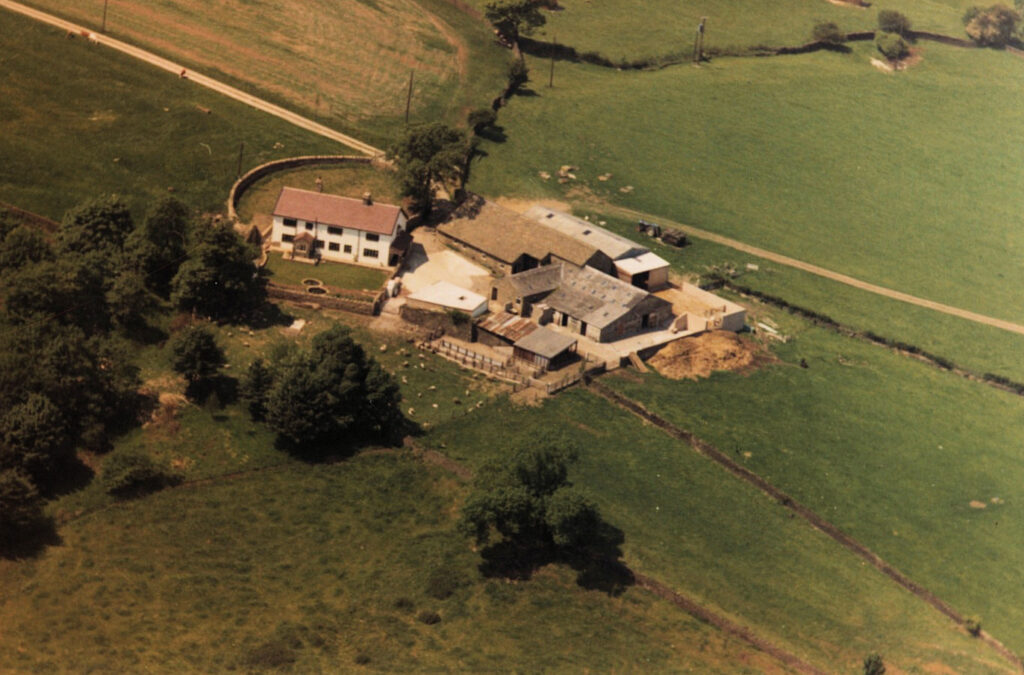
William Mercer of Cowden was buried on the 10th October 1613. His will stipulated that he wished to be buried ‘within the Chapell of Harwood as near to Elizabeth my wife as can be convenient.’Elizabeth herself had been buried just eleven days before William ,on the 29th September, 1613 the day on which William made his will. We may never know why William and Elizabeth died within days of each other, but William did felt it prudent to settle his affairs on the day that his wife was buried.
Cowden is situated in a pleasant position near the Bowley area and to the east of Dean Lane. Hidden from view by a rise in the land it has a secluded and private location. The farm, variously spelt as Cowden, Coulden, and Couden in documents, is probably one of the oldest in Great Harwood the pattern of the fields (irregular and radiating from the farm in the centre) suggesting a farm of some antiquity. It seems to have had about 60 statutory acres from at least the early eighteenth century (with some reduction, however, in the mid 19th century) until 1980 when land was purchased from nearby Squires Farm and is now 90 acres.
There have been many alterations to the house over the years, but it would appear to have been a single pile longhouse with an outshot added to the north wall at some later date. There is a large ingle nook fireplace in what was probably the hall. Around 1990 a porch was removed which had concealed a datestone with the inscription‘William and Phoebe Mercer 1729 ‘. This could mean either that the house now standing was built in 1729 totally replacing an earlier structure or that substantial renovations had taken place.
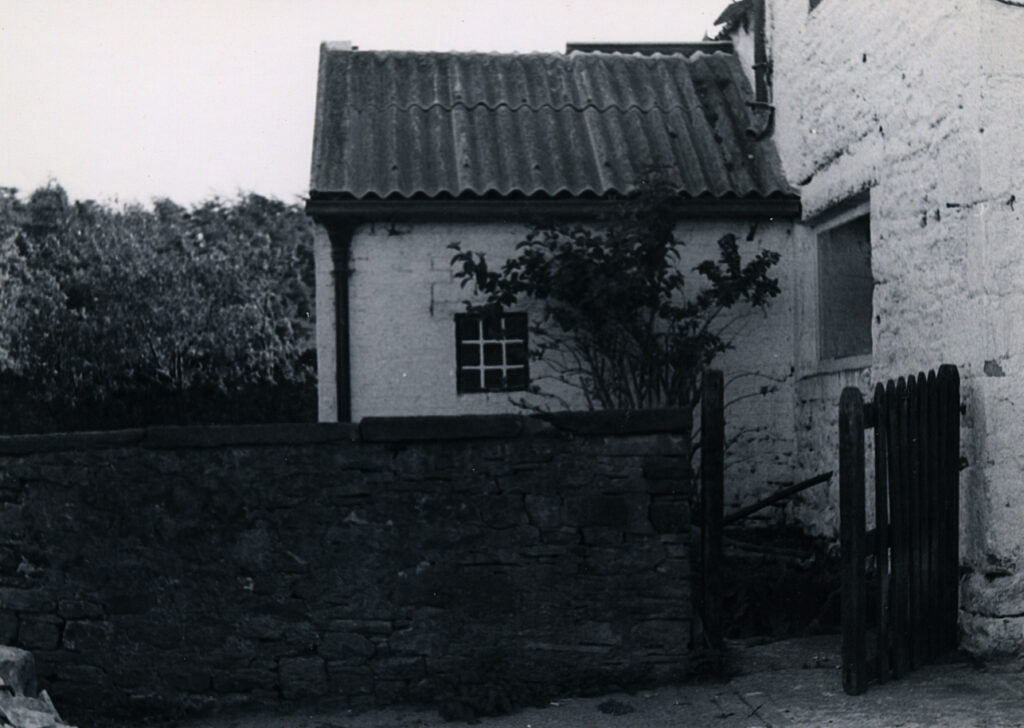
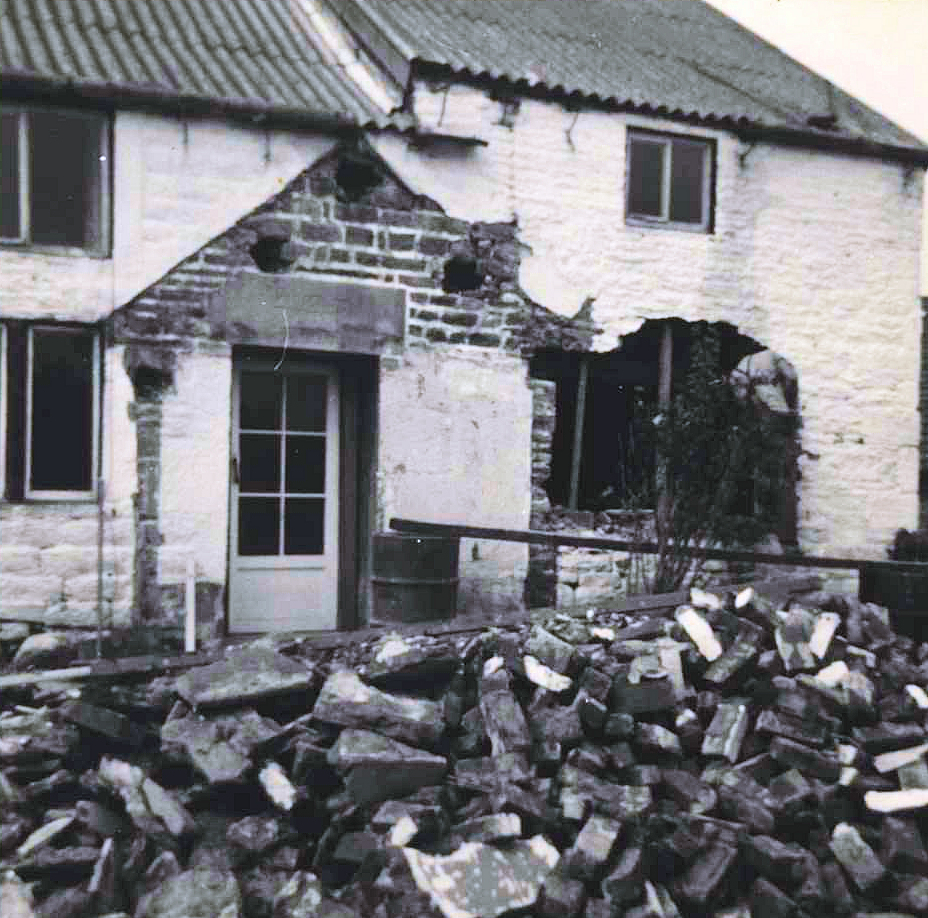
Photographs taken at the time of the alterations in 1990 show large crucks in situ and after removal. Building with crucks may have continued in Lancashire until about 1725 but descriptions of the house gleaned from the inventories suggest a much earlier date. The layout of the house and the site of the hearth suggests that the Hearth Tax of 1666 showing only one hearth was correct and not an indication of avoidance. Having only one hearth also suggests an early construction date.

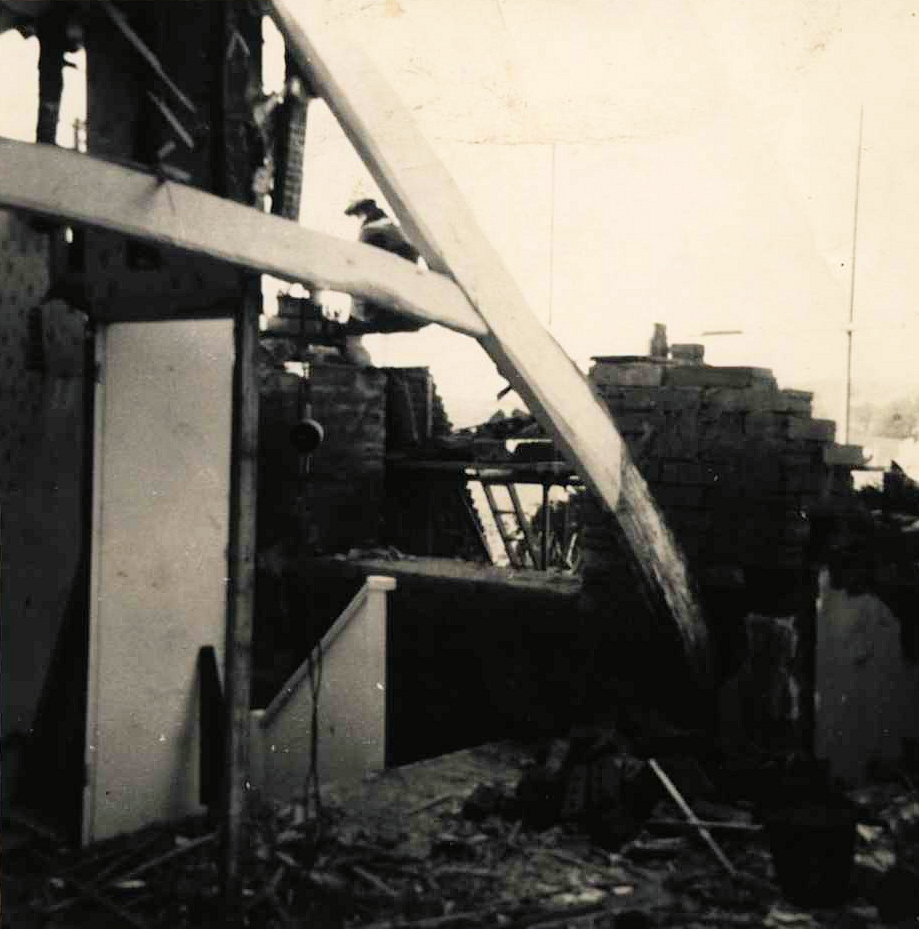
Farms that share, or would previously have shared a border with Cowden are Bowley, Dean, (now Bowley Scout Camp) Tan House, (now separated from Cowden by private housing) Egg Syke and Squires. Cowden, however, has the distinction of having the earliest mention in the parish register. It also has the distinction that many of the wills made by the inhabitants of the farm have survived.
William Mercer’s will of 1613 and the inventory of his goods are possibly the earliest that can be linked to an actual place in Great Harwood. He called himself a yeoman, a title often accorded to those who owned land, but although no leases relating to Cowden have been found the will of his great-grandson, John, states that the land was held from the Hesketh family who were lords of two thirds of Great Harwood including most of the Upper Town where Cowden is situated. It is probable that the status he gave himself comes from his relative wealth and standing within the community. It seems his peers accorded him even greater status than he did himself for although the introduction by the appraisers to his inventory gives his status as yeoman within the inventory he is named as Mr. William Mercer, a title usually reserved for gentlemen.
The inventory of William’s goods and chattels gave them a valued of £256 2s 2d. The largest proportion of this was in farming stock, livestock accounting for £79 and corn and hay at £34. The ‘sacks and winnowing cloths’ , items used to process crops, indicate that this was grown at Cowden or nearby. Debts owed to William came to £66 9s, the largest of these was £30 owed by John Mercer, probably his son, and Roger Fielden who owed £10 was his brother-in-law.
William’s household goods show that his family enjoyed a degree of comfort with the total for household items being £48 12s 3d. Beds and bedding account for £18 13s 3d of this. His clothing is worth £2, and in silver spoons, gold and money he has £13 17s 8d. The gold he left to specified family members.
Significantly, for the time and place where woollen cloth production was an important part of the economy, with many families although primarily engaged in agriculture also producing cloth, there are no looms listed in the inventory. However, textiles do appear in the inventory; the largest part of this is wool worth £11 4s. Linen, canvas yarn and flax are also listed. Textile implements listed are spinning wheels, cards and a heicle.
Mary Brigg, in her work ‘The Forest of Pendle’ analysed 123 inventories which reflect a variety of circumstances and comparison with her findings has allowed some conclusions to be made about the prosperity of Cowden and the social status of its inhabitants. As a comparison with Pendle Brigg used inventories from Essex and found that the division of wealth was greater in Essex with more testators at the top of the scale and the bottom. The value of William Mercer’s inventory compares favourably with both Pendle and Essex testators with his goods being valued at £256; in Pendle only nine of 123 inventories examined had a value of over £200, while in Mid-Essex thirty-six of 187 were valued at over £200.
Louie Pollard in ‘Great Harwood Gleanings’ examined several inventories for Great Harwood for the years around 1580 and she states that very few Great Harwood farms had many sheep and almost all wool was bought at market, probably from Ribble Valley sources. Joan Thirsk, however, states that half the farms in the ‘mixed farming lowlands’, of which Great Harwood was a part, had flocks of sheep. Mary Brigg quoted W. Harwood Long’s article ‘Regional Farming in seventeenth-century Yorkshire’ as finding that the average value of sheep kept on the farms of the West Riding was £5, and she found that the average value for the Forest of Pendle was £2 6s. William Mercer of Cowden, however, had 39 sheep valued at £9 15s which, in view of the above quoted figures, seems a surprising amount and suggests that wool production was taking place in areas of Great Harwood to an extent before unsuspected. Comparison of the inventory of William with that of Thomas Mercer (no known relationship) taken twelve years later in 1625 and who had goods valued at a similar amount to William shows subtle differences between the economic activities of the two farms. Both inventories were made at the same time of year, 30th of October and 3rd of November, and in terms of produce stored, either for family use or for sale, amounts could be expected to be similar. William Mercer of Cowden had wool worth £11 4s while Thomas Mercer had only £2 in wool although he possessed almost twice as many sheep. Thomas Mercer possessed a variety of tools for yarn and cloth production and for finishing cloth and although they account for a small percentage of the total value they are an indication of the scale of cloth production. William Mercer however, had very few textile implements.
William Mercer had wool valued at £11 4s, while later in the century John Cunliffe, who called himself ‘clothier’ had 10 stones and a half of wool valued at £6 8s 3d. Wool prices may have changed, but it is clear that Williams’s stock of wool was an important part of the economy of the farm. The amount of wool (some time after shearing time) and tools for the early stages of textile preparation suggest that William and his family were producing wool for sale and possibly also preparing yarn from this to sell. A plan of Great Harwood made in 1605 shows the road network of the area with the roads to both Manchester and Halifax clearly marked. Both these were centres of the cloth trade and may show that these routes were of importance to local wool producers.
In his will William Mercer named his children, John, Christopher, Edward, Grace and Jennet. Of these, the eldest, John, born at Cowden in 1591, inherited the tenancy of the farm. It is comparatively easy to trace John and his family in the parish registers; they are often identified by their residence. Although no record of John Mercer’s marriage has been found his wife Margery is named in his will and he must have married at least a short time before 1618 when the birth of his first child, William, is recorded.
John died in 1669 and the inventory of his goods compiled on the 25th of September that year is particularly useful and interesting in that it lists goods at Cowden room by room. These rooms were: the lower chamber, the upper chamber, the loft, the milkhouse, the fire house, and the buttery. The total value of his goods was £140 5s, substantially less than that of his father, but the value still compares favourably with the Pendle Forest and Essex inventories where most inventories had values of less than £100. The ratio of farming, textile and household and personal goods is also quite different to that of his father, with most of his worth being invested in agriculture (of which £84 was in cattle) and household goods worth about £14 compared with the £49 11s 4d owned by his father. John possessed almost exactly the same number of sheep as his father, 38, valued at £8 10s, but the amount of wool was only £2. Textile tools do not appear on the inventory, with possible exception of ‘weights and scales’. This implies that the only involvement in textiles at Cowden at this time was in wool production and possibly selling that wool. Life at Cowden would seem to be less luxurious than earlier in the century; all of the items listed are functional in character, but of the seven beds listed two are feather beds.
A tax was levied in 1660 by Charles II and a list of the taxpayers has survived for Great Harwood which shows that of the 213 people paying the tax in Great Harwood the wealthiest was Edmund Cockshott assessed at a value of £80 per year. Three other men are assessed at £40, £15 and £13 6s 8d, and John Mercer is assessed at £7 10s, making him the fifth wealthiest man in the town at the time. Hearth Tax returns are often used as an indicator of wealth within a community and a Hearth Tax was levied in 1666; the individual with the most hearths was Edmund Cockshott who had seven, but John Mercer is listed with only one. Although the Hearth Tax records are useful to give an overview of the overall prosperity of a town, in this case the one hearth of John Mercer would not seem to indicate poverty but either frugality or an older dwelling.
It would seem that there was a decline in the fortunes of the family at Cowden between the years 1613 and 1669 when John Mercer was the tenant. His total worth at £140 15s 6d is considerably less than that of his father and the proportion of household goods listed is only £14 compared to his father’s £49 11s 4d. In the years around 1620 the prosperity of the livestock industry declined. The reasons were poor harvests at that time which caused distress to many livestock farmers, and reports made to the government at the time from the north told of great distress among farmers caused by crop failure and falling stock prices. This caused a trade depression with long-term results. “Bad harvest, plague outbreaks, poverty and unemployment were among the dominant characteristics of this and the two subsequent decades.” This accords with the findings of C.D. Rogers in his study ‘The Lancashire Population Crisis of 1623’, who concludes that the root cause of the crisis was famine. Using parish registers as a principal source he found that although deaths may have been caused by disease it was famine caused by a series of bad harvests in the years preceding 1623 that made the population susceptible to those diseases.
The parish register of Great Harwood gives few clues as to how the town was affected for the crucial years of 1623 and 1624 as there are almost no baptisms, marriages or burials recorded. In the adjacent parish of Altham the parish register, however, shows that marriages and baptisms took place but that deaths rose dramatically during 1623. The difficulties experienced in the north of England would be also felt in Great Harwood and this may be one of many reasons why John Mercer did not possess a similar wealth to his father. John had, however, considerably more cattle than his father, £84 compared to £5 8, and it may be that John was reacting to a changing market and economy. Whatever the decline in the family fortunes, John still held on to his status and his family made sure it was celebrated with a fine funeral. His inventory lists debts owed for funeral expenses including £1 18s 7d to Henrie Fielden and 9s to John Taylor, both listed as licensed alehouse keepers in 1664. Richard Alston provided wheat at 13s 3d and the ‘penie dole’ came to £1 19s. Altogether those and other funeral expenses totalled £8 5s 5d.
On John Mercer’s death his son William became the tenant and at some point the lease of the adjacent Squires Farm was acquired and Elizabeth, Alice, Thomas and Edward Mercer, children of John are all recorded as being ‘of Squires’ at the time of their deaths between the years 1691 and 1726. A petition exists in the Public Record Office between Squire, Hesketh, Nowell and Mercer, which may relate to the transfer of this property. William died in 1692, but no will appears to have survived.
The parentage of John Mercer of Cowden who died in 1704 is problematic. No record has been found for his birth and the lack of a will for his probable father, William Mercer, makes if difficult to be certain of his parentage. However, in his will made in 1703 John Mercer states that the lease for Cowden dates from 1685 which was during the lifetime of William Mercer and if the terms were for ‘lives’ then John, as William’s son, would be admitted automatically on payment of a fine.
John Mercer’s inventory seems to show that, having a value of £38 5s 8d, the wealth of the main line of this family had declined steadily since the death of his great-grandfather in 1613. John, however, styled himself yeoman in his will, although the appraisers of his inventory did not do so. John states that he is ’seized of and in one Messuage and Tenement comonly called Cowden nock in my owne possession contayneing about twenty eight acres’. Although the value of the inventory is only £38 5s 8d John instructed William to pay £20 each to daughter Ann and his son John, stipulations that may have repercussions for his son William. He also left his son John ‘one paire of looms’. The looms are not mentioned in the inventory, therefore it seems possible that all the goods at Cowden are not listed and perhaps not all the money; no debts either owed by or to John are mentioned. This may mean that the true worth of John isn’t evident from this inventory. The total value for agriculture was given as £28 10s and with only twelve sheep listed. Although agricultural tools are listed no textile implements appear despite looms being left to his son John. It might be that John had already transferred some of his goods to his family before his death or that this reflects the true value of the farm at this time. If that is true then a considerable change had taken place since 1669 and this change could be related to the decline in population since 1651, and also the increasing use of cotton rather than wool. Walton states that the “cotton using fustian manufacture spread outwards from its original Bolton base in the later seventeenth century, predominating as far north as Blackburn” and “the use of cotton grew steadily more prevalent during the first half of the eighteenth century and pure cotton cloths were increasingly in evidence by the 1750s”. Both of these factors would affect a farm principally engaged in cattle and sheep for meat and dairy provision to the local community and wool production for weaving.
In his will John Mercer stipulated that his eldest child, William, was to have Cowden in full after the death of Margaret his wife. Both William’s marriage to Phoebe Walmsley in 1707 and the baptism of Alice his daughter in 1711 are recorded as at Cowden in the parish register.
A survey made of Hesketh lands in 1735 lists William Mercer at Cowden as the tenant and the first life. His age is given as 48, and his daughter Alice, the other life, as 22. The ages would reflect their ages at the time the lease was made, and indicates a birth year of around 1685 for William. There are no baptisms for a William Mercer son of John around that time. For the first time this document lists the fields associated with the farm. These were:
- House barns orchards and crofts
- Little Bowley
- Little Hey
- High Field
- Spring
- Bryery Bank
- Meadow below it
- Long field
- Cow hey
- Meadow
- Wood in two parts
The complete area was 28 acres, 1 rood and 34 perches, but these were Lancashire customary acres. A customary acre was not a standard size and differed widely between places. The statutory acreage may have been up to twice the customary acreage.
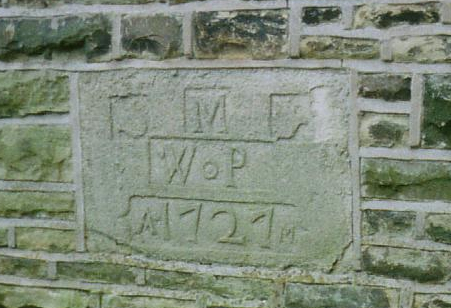
Changes were taking place at Cowden and the immediate area in the years of William Mercer’s tenancy. The population of England began to rise in the early eighteenth century and although this was slow at first it would have created a pressure on land which often led to sub-letting, encroachments on the waste and the building of cottages on small parcels of land bordering the road. It seems that when the population began to rise William was able to achieve a degree of prosperity. The lack of documentation for William does not allow for firm conclusions to be drawn but the ability of William to undertake either rebuilding or renovation of the farmhouse shows a degree of confidence in the economy. However, the most significant rise in population did not begin until after 1730 and William may not have been able to take advantage of favourable market conditions.
Alice Mercer, apparently the only child of William and Phoebe Mercer, was baptised in 1711 but does not have, in the Great Harwood register, either a marriage or a burial entry. It may be that the marriage entry was missed for a variety of reasons and that her burial is recorded under her married name but the appearance of her mother in the poor law register before her death in 1770 seems to point to few close living relatives and that the fortunes of this branch of the Mercer family had declined considerably. William Mercer died in 1752 and it would seem that in the absence of a suitable heir to take over the tenancy of the farm Cowden now passed to an unrelated family, the Hoyles.
James Hoyle was in possession of Cowden, Tottleworth Lee in Rishton and a cottage in the Lower Town of Great Harwood when he made his will in 1767. Tottleworth Lee would appear to be the first farm leased by James Hoyle. The farm, now known as Lee Farm, would formerly have been an isolated farm on the border of Rishton and Great Harwood and as the church at Great Harwood was the church preferred by many of the inhabitants of Rishton the absence of any mention of James Hoyle and his family in the parish registers of the church before 1752, when the lease for Cowden was acquired, seems to show that the family had arrived in Great Harwood shortly before this. The Lomax family of Clayton Hall bought land in Great Harwood from the Nowell family in 1773 and from the Heskeths in 1819, so becoming the owners of most of the town. From about the time of the first purchase of land in 1773 a lease register was maintained by the Lomax Estate and with not many surviving leases is a good source for the names of tenants in Great Harwood. The tenancy of the Hoyle family at Cowden is recorded as follows:
- Cowden 1752 – James Hoyle for the lives of
- James Hoyle son 17
- John Clark grandson 3
- John Smalley 16
- Quantity £26 3s 6d Yearly Value £29 7s Rent £1 14s
- James Hoyle last life died 2/7/1820
- Held of Thomas Hesketh Esquire.
- The register also lists:
- Quaker Intack – James Hoyle Tenant at will.
The evidence that Cowden continued to be agricultural after 1752 comes from the parish register, the will of James Hoyle 1767 and his son James 1818. The parish register records the baptism and burial of family members and from 1766 these are usually shown as at Cowden or Higher Cowden.
Although the inventory for James has survived, it would seem that at the time of his death he was living at his cottage in the Lower Town of Great Harwood and that the inventory relates to this cottage. Only three rooms are mentioned: the house, the shop and the parlour. His goods in this cottage amount to only £14 16s 6d, which includes £7 in ‘Purse and apparell’, but ‘Bill, Bonds and desperate Debts’ amounted to £105. It is probable that this inventory is not a true picture of James’ wealth because his will also states that he wishes his three daughters to have £2 each yearly from the remaining value of Tottleworth Lee, which he left to his son John, and £4 each from Cowden, which he left to son James. Cowden is referred to, in his will, as Higher Coulden and the parlour at Cowden is mentioned particularly as being his property and given to his son James ‘I having Assigned the other parts before to him’. Therefore his son James was probably in possession of Cowden sometime before 1767 and was the tenant at Cowden until1820, the year of his death, confirmed both by the parish register and the lease register of the Lomax estate.
The second James Hoyle of Cowden married twice and produced a family of fourteen children, twelve of whom survived him and who are mentioned in his will dated 1818. Despite this large family it would seem that Cowden was well able to support them all and at his death, although no inventory survives, the executors of the will made an oath that the personal estate and effects were ‘under £1,000.’ James instructed his executors, after selling all his goods and dividing those proceeds between his children, to place £300 out at interest and pay the profits to his wife Betty Hoyle. The remainder he left to son John and Joshuah. No items of industry or farming are mentioned in the will, but James Hoyles’ assertion that he was a ‘farmer’ and parish register entries giving his occupation as farmer, which was unusual in Great Harwood at that time, shows that he was solely concerned with agriculture as a source of income.
Being unable to obtain suitable inventories might have meant that it was difficult to reach any conclusions about the relative status of the Hoyle family and the economic standing of Cowden during their tenure. However, some evidence is available from the Window Tax made in 1762 and the Land Taxes for 1782 and 1800. The Window Tax of 1762 lists James Hoyle with 7 lights; this is the number give for the majority on the list, only two men had more with eleven each. The Land Tax of 1782 gives a different picture with James Hoyle given both as proprietor and occupier of the land and assessed at 7s 11d. The values ranged from £13 2s 8d to a mere 8d, but James compares with the values for Squires (8s 4d), Eggsyke (8s 11d) and Whittles (7s 7d). It seems that a change took place between 1782 and 1800 when the Land Tax for the latter year shows that the farm was now assessed at a greater value than others. The proprietor is now given as Sir Thomas Dalrymple Hesketh and occupier James Hoyle, but the value is given as 12s, which is well above the average for the list. The highest sum paid was 17s 6 ½ p by John Sudell.
Landlords were generally keen to take only those tenants with the resources to maintain and improve their holdings and the first James Hoyle was probably well placed to take advantage of the rapidly rising population when he took the lease of the Cowden in 1752. Because of the lack of a comprehensive inventory for Cowden in this period no indication of the type of farming can be ascertained but it would seem likely that they would concentrate on meat and dairy produce to supply the demands of those in the area now largely dependent on weaving as a source of income. The Land Tax of 1782 shows that Cowden was comparable with other farms in the area and probably of a similar size, but when the Land Tax of 1800 was levied the farm was the second most valuable of those owned by the Heskeths. It may be that extra land had been acquired in the intervening years and this could account for the value of the estate of James Hoyle the elder.
James Hoyle died in 1820 and it is possible to construct a list of inhabitants of the farm after his tenure[1] but its fortunes after this date have not explored in detail as yet. However all the evidence examined shows that Cowden has, during the period 1611 to 1820, relied solely on agriculture for its economic prosperity; census and other sources would seem to show this to be true after 1820 also. The first inventory examined, that for William Mercer 1613, shows that the farm was engaged in mixed husbandry, cattle, sheep and corn. Later it would appear that the farm concentrated on livestock, principally cattle for meat and dairy. Further research into the period from 1752, when the Hoyle family became the tenants, would allow firmer conclusions to be made about the type of farming practised from that time. Although at certain times the prosperity of the farm has been threatened by the fluctuations in the economy and prevailing conditions, the farm has survived as a purely agricultural unit. Cowden seems never, unlike many other farms in Great Harwood, to have had a direct role in the production of cloth, that is the weaving and finishing of cloth, but has supplied wool to local cloth producers and weavers and probably meat and dairy produce to the local weaving community. Failure to diversify in times of economic disadvantage may account for periods of relative economic decline.
Residents at Cowden after 1820
| 1819 | Jas. Hoyle Coulden | Lomax rentals |
| 1820 – 1825 | John Scholfield Coulden Farm | Lomax rentals |
| 1832 | Richard Sharples Cowden | Lomax rentals |
| 1841 | Richard Sharples, Farmer | Census |
| 1851 | Thomas Mercer, farmer | Census |
| 1861 | William Gerrard farmer 30 acres | Census |
| 1871 | William Gerrard, Farmer 29 acres | Census |
| 1881 | William Braithwaite farmer of 60 acres | Census (listed as Cow Hey) |
| 1881 | William Braithwaite, 5 Church Street, tripe dealer (cottage attached to the Cross Axes) | Barrett’s directory |
| 1891 | William Braithwaite | Census |
| 1897 | William Braithwaite Cowden Farm £75 2/2/1897 2/2/1910 | Alsprings Estate Farm Rental Ledger |
| 1899 | Dennis Haworth from 2/2/1899 at £80 per annum | Alsprings Estate Farm Rental Ledger |
| 1906 | Dennis Haworth | Alsprings Estate Farm Rental Ledger |
| 1908 | William Parker from 2/2/1908 at £87 per annum | Alsprings Estate Farm Rental Ledger |
| 1909 | William Parker | Barrett’s directory |
| 1915 | John Parker from 2/2/1915 rent increased to £90 pa from 2/2/1920 2/2/1938 rent reduced for new shippon and interest on installation of electricity | Alsprings Estate Farm Rental Ledger |
| 1935 | Parker John, Cowden | Barrett’s directory |
| 1946 | John Lowe from 1/11/1946 rent £155 last rent shown 2/8/1957 | Alsprings Estate Farm Rental Ledger |
| 1964 | Property vacant, sold by auction on 30th October, 1964 | Alsprings Estate Farm Rental Ledger |
Sources
Wills used for this essay were:
- William Mercer 1613
- John Mercer 1669
- John Mercer 1704
- James Hoyle 1767
- John Hoyle 1804
- James Hoyle 1818
- John Cunliffe 1679
Atlham, St. James’ Church
Registers of the parish church of Altham in the county of Lancaster.
Lancashire Parish Register Society 1909
Aspin, C
The Woollen Industry
Shire Publications 1982
Barley, M W (ed.)
The Buildings of the Countryside 1500 – 1700
Cambridge University Press 1990
Bowden, P
“Agricultural Prices, Farm Profits, and Rents”
in
The Agrarian History of England and Wales Vol. IV 1500 – 1640
Thirsk, J (ed.) Cambridge University Press 1967
Brigg, Mary
The Forest of Pendle in the Seventeenth Century
Reprinted from the Transactions of the Historic Society of Lancashire and Cheshire Vol. 113 1961
Brigg, Mary
The Forest of Pendle in the Seventeenth Century, Part Two
Reprinted from the Transactions of the Historic Society of Lancashire and Cheshire Vol. 115 1963
Brunskill, R W
Traditional Buildings of Britain
Victor Gollancz 1992
Brunskill, R W
Houses and Cottages of Britain
Victor Gollancz 1997
Cameron, K
English Place Names
Batsford 3rd edition 1977
Great Harwood
1666 Hearth Tax
Transcribed from the original held at the Public Record Office
Great Harwood Library
Great Harwood, St. Bartholomew’s Church
The parish register of Great Harwood, 1547 – 1812
Lancashire Parish Register Society 1937
Milward, R
A Glossary of Household, Farming and Trade Terms from Probate Inventories
Derbyshire Record Society 1986
Mingay, G E
‘Size of farms in the Eighteenth Century’
in Economic History Review Vol. 14 1962
Pollard, L
Great Harwood Gleanings
Lancashire County Council 1978
Rogers, C D
The Lancashire Population Crisis of 1623
Manchester University Extra Mural Department 1975
Rothwell, M
Industrial heritage : a guide to the industrial archaeology of Great Harwood
Hyndburn Local History Society 1980
Rufford Old Hall
National Trust 1991
Sharpe, J A
Early Modern England
Arnold 2nd Edition 1997
Stocks, G A and Tait, J (eds.)
Dunkenhalgh Deeds 1200 – 1600
Chetham Society 1921
Taylor, C
Village and Farmstead
Philip 1983
Taylor, R F
Three Cruck buildings in Lancashire and Cheshire
Publisher not given 1965
Thirsk, J
“The Farming Regions of England”
in
The Agrarian History of England and Wales Vol. IV 1500 – 1640
Thirsk, J (ed.) Cambridge University Press 1967
Walton, J K
Lancashire a social history 1558-1939
Manchester University Press 1987
Walton, J R
“Agriculture and Rural society 1730 – 1914”
in
An Historical Geography of England and Wales
Dodgshon, R A, Butlin, R A (eds.) Academic Press
2nd edition 1990
Whitaker T D
A History of the Original Parish of Whalley
Routledge 4th ed. 1876
Winchester, A
“Field, Wood and Forest – landscapes of medieval Lancashire”
in
Lancashire Local Studies
Crosby, A G (ed.) Carnegie Publishing 1993